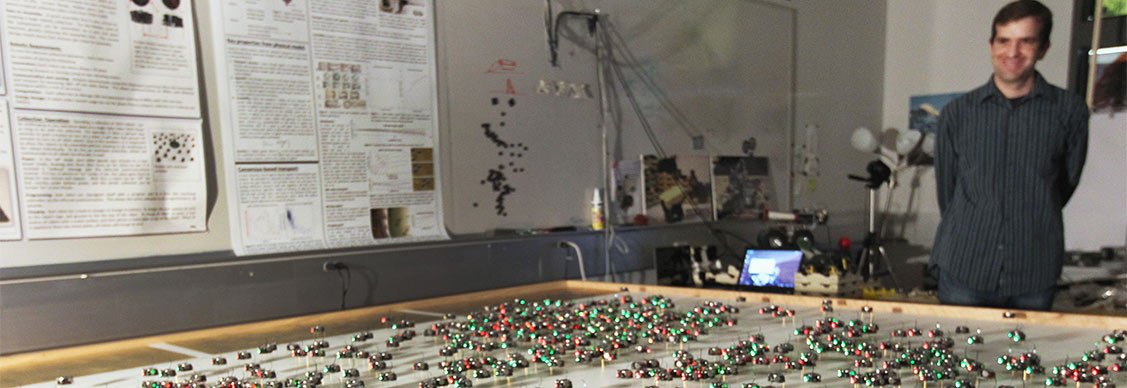7 technologies poised to change how buildings are made
From fiberbots to Martian concrete, how will new construction materials reshape real estate?
You may have heard about buildings made from mass timber, a dense composite material with the strength of steel at a fraction of the weight.
But what about Martian concrete?
It may sound like science fiction, but it’s one of several emerging construction technologies that could shape commercial real estate development in years to come.
“I think we're going to see fantastic results when it comes to construction technology, with major advancements taking place in robotics, digital fabrication and 3D printing,” says James Scott Lead Researcher, MIT Real Estate Innovation Lab. Having evolved quickly in recent years, “these technologies have the potential to make a significant difference in areas where it matters most.”
Read on for the materials you probably don’t know about but should, according to researchers at MIT’s Real Estate Innovation Lab, who contributed a list of tech poised to impact the built world in JLL’s Transform with Technology report.
Graphene
What’s stronger and more sustainable than concrete? Graphene. It’s a single layer of tightly packed carbon atoms arranged in a honeycomb lattice. At only one atom thick and 100 times stronger than steel, it’s also one of the strongest materials in the known universe. Graphene is flexible, transparent, highly conductive, and seemingly impermeable to most gases and liquids.
It can be used to strengthen concrete, making it more durable and less permeable. Graphene-strengthened concrete requires fewer materials overall than traditional concrete, reducing the environmental footprint of construction projects.
Martian concrete
Pay special attention to this one if you are planning a commercial real estate project on Mars or in Mexico City.
Concrete production typically requires water. But Martian concrete can use sulfur instead. It’s perfect for environments where there is no water – like Mars – but also water-scarce locations on Earth. Martian concrete is highly resistant to corrosion and currently used for non-structural applications such as plumbing and landscaping. It is also fast setting, requiring only one to two hours, while conventional concrete takes 28 hours to cure. This technology has been used for the first time in a home by AI Spacefactory that is available as a short-term rental.
Researchers have found that Martian concrete is just as strong as regular concrete, too — that is, if you adjust for the gravity on Mars.
Digital fabrication
Digital fabrication is a design and production process that combines 3D modeling with 3D printing. It involves layering material until the completed shape is produced. It can also involve subtractive manufacturing, where objects are carved out of a solid block.
Robotic and digital fabrication on building sites could revolutionize the construction industry, allowing for materials to be produced onsite. Just imagine how this process could reduce delivery time on materials, make for shorter projects, decrease material costs and empower more consistent product quality.
Hypercells
Can a building construct itself? Potentially. Introducing hypercells, shape-shifting robotics cubes that can move in any direction. Each hypercell contains a computer chip to sense its environment, avoid obstacles and communicate with the other hypercells.
They could be used to transform spaces in a matter of seconds, allowing for a building to continuously adapt for what is required at that time. This is especially important with the shift to hybrid ways of working, because it allows for collaboration or heads down work on demand.
Looking for more insights? Never miss an update.
The latest news, insights and opportunities from global commercial real estate markets straight to your inbox.
Self-cleaning materials
Now, can a building clean itself? This one is ripe for the pandemic era. Self-cleaning surfaces can remove debris or bacteria from their surfaces in a variety of ways. Their self-cleaning abilities are inspired by natural phenomena observed in lotus leaves, gecko feet and water striders.
Self-cleaning materials allow for a reduction in operational costs. If you’re wondering if this technology could work at home, too — “kitchen, please clean yourself” — you’re not alone.
Fiberbots
Picture a swarm of bees producing honey. Now picture a swarm of robots producing a building material. “Swarm bots” use very simple robots in large numbers to build a design without central guidance. These robots have limited physical abilities and programming, yet can build amazing things.
Fiberbots are a type of swarm bot developed by Neri Oxman’s Mediated Matter Group at MIT. They produce tubes made of fiberglass that are an energy-efficient, sustainable solution for buildings. Unlike other swarm bots, which are often developed around specific modular or prefabricated components, fiberbots are more intuitive, reacting to the environment around them to make changes.
While still in an experimental phase, this solution has the potential to allow for a faster and more efficient form of construction.
4D printing
We’ll see your 3D, and raise you another dimension. Futuristic 4D printing allows objects to transform when an external energy source – such as temperature, light or other environmental stimuli – are added to the object, and, in some cases, self-assemble. It’s like robotics without wires.
An example of this would be printed pipe valves that can expand, contract or unfold when the external temperature changes. While still in early stages, this has potential to create a more adaptable office environment.
